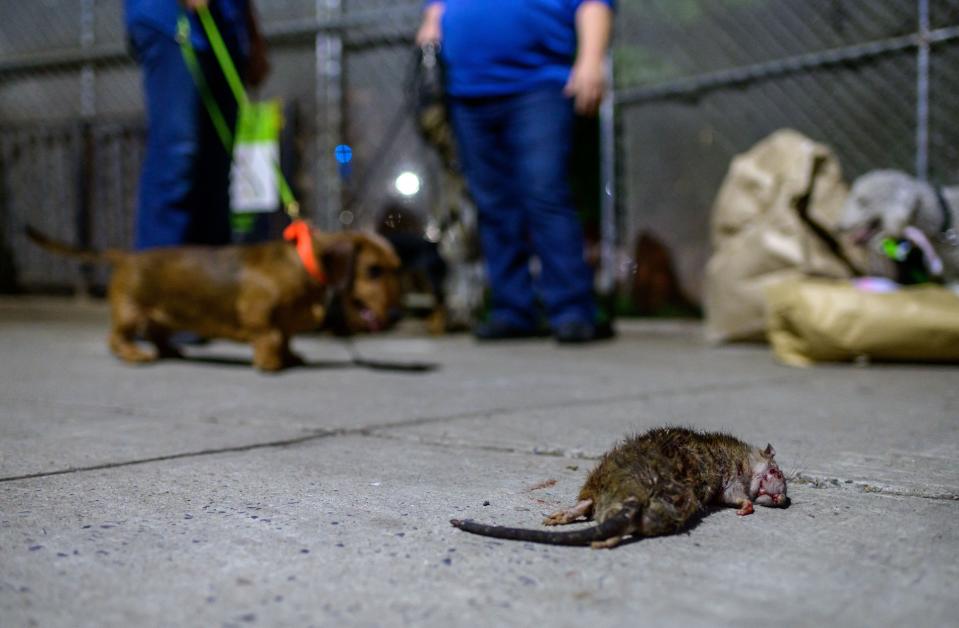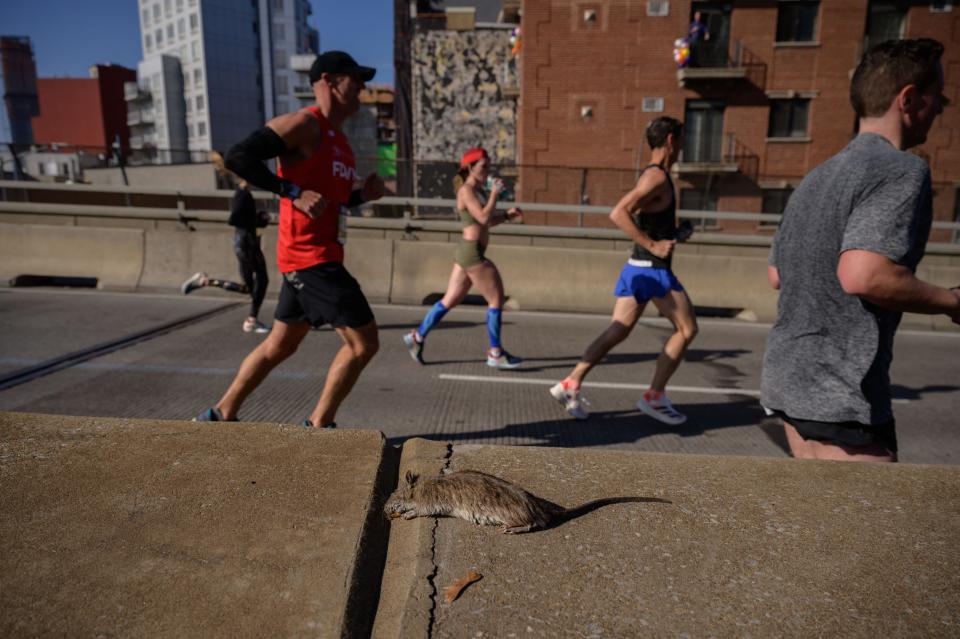Rat urine is causing uptick in rare disease among New York sanitation workers.
NEW YORK – A year after New York City anointed a czar for its war on rats, health officials are seeing a jump in cases of a rare disease linked to rat urine.
Sanitation employees, who collect the city’s trash and are frequently exposed to rats, say workers are disparately represented in cases of leptospirosis, the illness caused by exposure to rats' urine.
A union shop steward experienced such severe symptoms from the disease he was read his last rites before he made a recovery, said Harry Nespoli, president of the Uniformed Sanitationmen's Association, which represents Department of Sanitation workers. And when the New York City Department of Health and Mental Hygiene released a warning about the upward trend in cases last week, another worker was hospitalized with symptoms, he said.
“The streets are looking cleaner, but the rats are still around,” Nespoli told USA TODAY. “Look, they were here before us.”
Manhattan Criminal Court: How Donald Trump's hush money trial team is using social media to weed out New York jurors

In 2023, New York City had 24 cases of the disease, the highest number of any reported year, Dr. Celia Quinn, New York City's deputy health commissioner for disease control, wrote in the health department’s April 12 advisory. This year there have already been six cases as of April 10.
Between 2001 and 2023, New York had 98 cases – and about a quarter of them occurred just in 2023, according to health department figures. Some people experienced acute kidney and liver failure and some had severe respiratory problems. Six people died in just over two decades.
Nearly all cases involved men and the median age for infection was 50. The Bronx had the most cases, at 37, followed by 28 in Manhattan, 19 in Brooklyn, 10 in Queens and four on Staten Island.
In April 2023, Mayor Eric Adams appointed the city’s first “rat czar,” whose job is to reduce the pest population and promote cleaner streets and new approaches to trash collection. The City Council also considered ordinances that could decrease the rat population using a birth control program.
In 2024, six sanitation workers got the disease, according to Nespoli, of the sanitation workers union. Five of the 24 cases the year prior occurred among sanitation workers, he added.
Nespoli said exposure to the illness is a job risk for trash collection workers. It can happen when workers’ gloves get wet, making them softer and easier for rat urine to penetrate, he said. He has advised workers to change their gloves frequently.
No sanitation workers have died of the disease, Nespoli added. But the prospect of such a scenario prompted a state bill backed by the union that would provide benefits to employees and their families if they become disabled or die from the disease.
New York owl: Flaco, owl that escaped from the Central Park Zoo, dies after colliding with building
In an email, Vincent Gragnani, a spokesperson for the city sanitation department, said the department frequently communicates with workers about how to prevent leptospirosis. Workers are encouraged to wear gloves to prevent contact with rat urine, among other dangers. He said the department also reminds workers to avoid touching their faces with work gloves.
As the city moves more trash into containers, he said, sanitation workers won’t have as much direct contact with trash and trash bags. In the last year, placing trash into containers has also reduced rat sightings reported to 311, including 6.3% citywide and 14.3% in rat mitigation zones, he added. By the fall, about 70% of all city trash is set to be placed in containers, which city officials expect will further drive down rat numbers.
The health department said in an email it had worked with the sanitation department’s medical division of occupational health to educate city workers about occupational risks and safety protocols, including through personal protective equipment. The department held a virtual event Wednesday to inform workers about leptospirosis and other health risks.
“We will continue to take steps to ensure city workers are aware of best practices,” the email said.
In its advisory last week, the health department said leptospirosis is spread via bacteria in infected animals’ urine. It’s transmitted through direct contact with contaminated water, soil or food which enters the body through open wounds or mucous membranes. The specific bacteria in New York City is associated with the Norwegian rat, the large brown breed historically found scampering through the city's trash, streets, subways, basements and sewage. Transmission of the disease between people is rare. Health officials said people are most likely to become ill from contact with areas where infected rats have urinated, especially when handling trash bags or bins.

Leptospirosis symptoms
The incubation period for the disease is typically five to 14 days, but it can become active after two days or it can take as long as a month to appear. Symptoms for people vary widely but include fever, headache, diarrhea, jaundice and rash, according to the U.S. Centers for Disease Control and Prevention. But without treatment, the disease can lead to kidney failure, meningitis, liver damage and respiratory distress.
In their advisory, city health officials noted the leptospira bacteria typically die in freezing temperatures or dry heat. However, excessive rain and unseasonably hot temperatures associated with climate change extend its possibilities for survival, which may help explain how bacteria have come to thrive in New York City. Officials cited hotter and wetter climates in June and October of 2023, compared with prior years when 10 of the year’s 24 cases occurred.
Health officials urged local providers to report cases as swiftly as possible.
The push to control rat populations gained renewed attention earlier this year following the death of the famous owl "Flaco," who escaped from the Central Park Zoo and lived in New York City. In February, Flaco died after crashing into a Manhattan building. Bronx Zoo veterinary pathologists found elevated levels of rat poison in his system that would have impaired his ability to fly.
This article originally appeared on USA TODAY: Rat-urine-spreading leptospirosis jumps in NYC as people get sick


